Genoese pattern
The design is purely 'Parisian' but the colouring is green, red, yellow and black. Belgium has taken this pattern for general use.

Purely 'Parisian' pattern in design, but the colouring is green, red, yellow and black. 40 or 52 cards. The pack is basically an export pattern from post-1827 France. Belgium has taken this pattern for general use and it is commonly found in many other parts of the world. For some reason the Jack of Clubs often bears a Spanish arms. It is distinguished from the Piedmont pattern by the diagonal division of the double-ended courts.
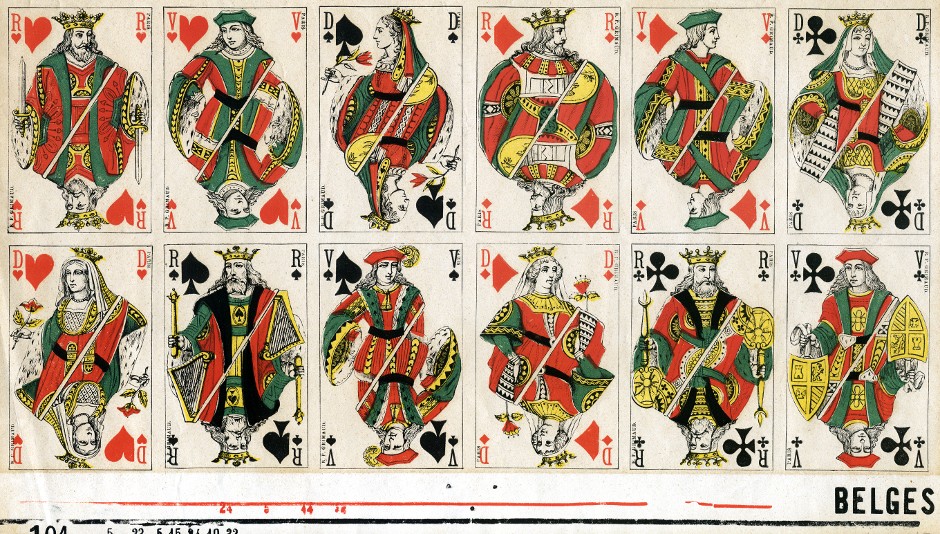
Above: Standard double-ended Genoese pattern cards from an uncut sheet manufactured by B. P. Grimaud, c.1920. Unlike the closely related 'Paris' pattern, the court cards are unnamed.
Below: Standard Genoese pattern playing cards, with French indices, manufactured by Van Genechten for Cigarrillo Holiday and the Estanco de Naipes del Perú, c.1965. The legend "Estanco de Naipes del Perú" is printed on the box and reverse of the cards in the centre of the advert for Holiday cigarettes.
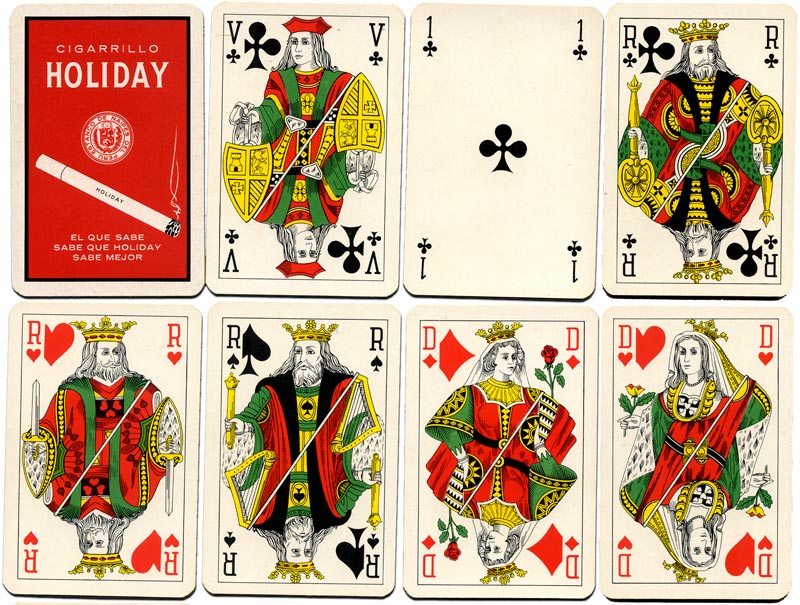
See also: Naipes Side-Car Genoese type manufactured by Luis Fourvel, Buenos Aires, Argentina, c.1940 • Genoese Pattern by E. Pignalosa, Naples, c.1950.

By Simon Wintle
Member since February 01, 1996
Founder and editor of the World of Playing Cards since 1996. He is a former committee member of the IPCS and was graphics editor of The Playing-Card journal for many years. He has lived at various times in Chile, England and Wales and is currently living in Extremadura, Spain. Simon's first limited edition pack of playing cards was a replica of a seventeenth century traditional English pack, which he produced from woodblocks and stencils.
Trending Articles
Popular articles from the past 28 days
Related Articles
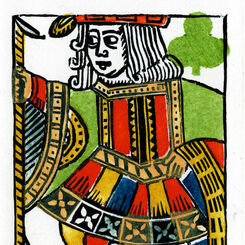
Woodblock and Stencil Jack of Clubs
A limited edition art print of the Jack of Clubs 1984 woodblock joker.
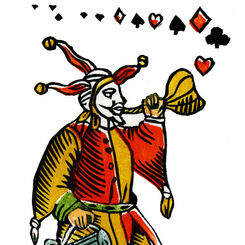
Woodblock and Stencil Joker
A limited edition art print of the 1984 woodblock joker.
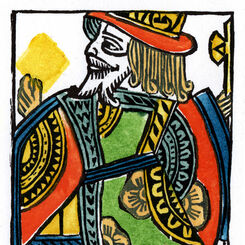
Woodblock and Stencil King of Diamonds
A limited edition art print of the King of Diamonds 1984 woodblock joker.
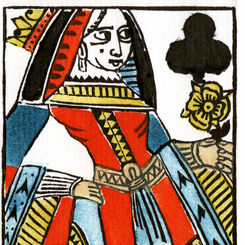
Woodblock and Stencil Queen of Clubs
A limited edition art print of the Queen of Clubs 1984 woodblock joker.
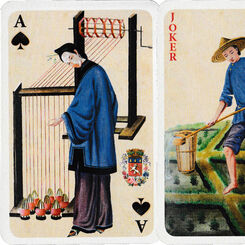
Les plaques émaillées d’Antoine Vollon
54 different enamel plaques depicting silk manufacture, by the Lyon artist Antoine Vollon.
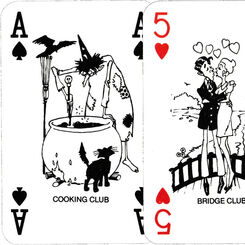
Club Soft Drinks
Promotional pack for Club soft drinks with amusing illustrations of different kinds of ‘club’.

High School Musical 3: Senior Year
American teen film depicting students staging their last spring musical.
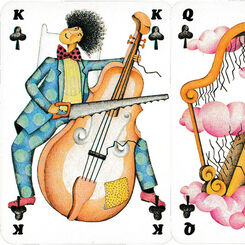
Le Jeu des Musiciens
Artist Silvia Maddonni’s gently humorous take on musicians and their instruments.
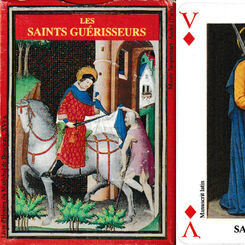
Les Saints Guérisseurs et Protecteurs
Healing and patron saints portrayed in paintings, manuscripts, altarpieces and statuary.
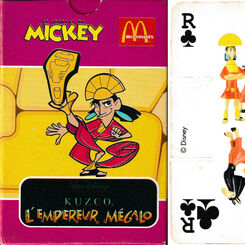
Kuzco, l’empereur mégalo
Notched cards featuring toys representing characters from the Disney film Kuzco, as offered by McDon...
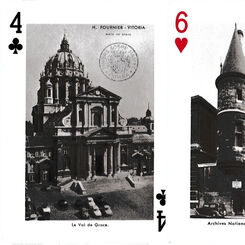
Monuments de Paris
‘Monuments de Paris’ souvenir playing cards produced by Heraclio Fournier, c.1964.
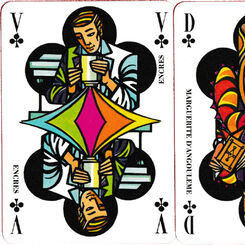
Lorilleux International
Promotional pack for Lorilleux International’s Lotus inks, with designs by James Hodges.

Les Tontons du Rock
Caricatures of rock and pop stars in black and white by Charles Da Costa.
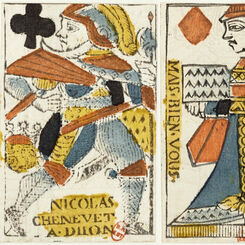
Burgundy pattern
The old Burgundy (or Burgundian) pattern by Nicolas Chenevet, Dijon.
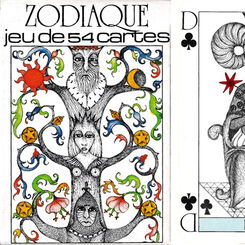
Zodiaque
“Les Signes du Zodiaque” playing cards designed by Youdi des Aubrys.
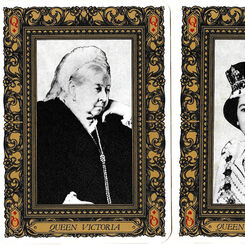
British Monarchs
Commemorating the royal wedding of Charles, Prince of Wales to Lady Diana Spencer on the 29th
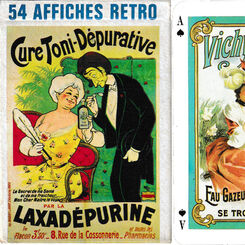
54 Affiches Retro
54 different old French advertising posters, mainly for travel and health products.
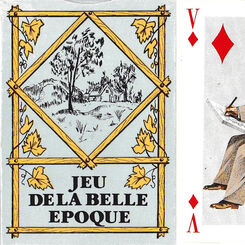
Jeu de la Belle Epoque
Jeu de la Belle Epoque, remembering a golden age of optimism, progress and elegance.
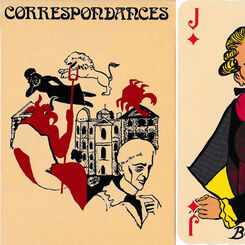
Correspondances
‘Correspondances’ depicting the 52 transfer stations of the Paris Métropolitain, France, 1985.
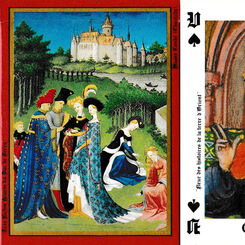
Jeu Gothique
‘Jeu Gothique’ illustrating the Gothic period in France, published by Editions Dusserre.
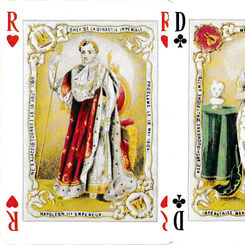
Jeu Bonaparte
Jeu Bonaparte depicting the extended family of Napoleon Bonaparte, France, 1978
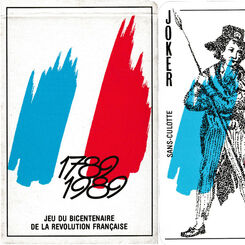
Jeu du Bicentenaire de la Révolution Française
Pack created by Yannick Pennanguer commemorating the bicentenary of the French Revolution and the ce...
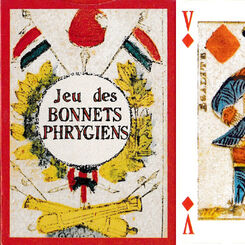
Jeu des Bonnets Phrygiens
Reproduction of Jeu des Bonnets Phrygiens relating to the Phrygian cap (or liberty cap), France, 198...
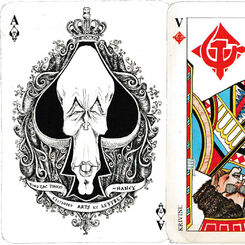
Jeu de la Vme
A political pack designed by Pino Zac and published in 1977 by Editions Arts et Lettres.
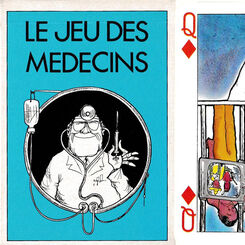
Jeu des Médecins
Cartoons of doctors and nurses by Pino Zac, published by B.P. Grimaud in 1983.
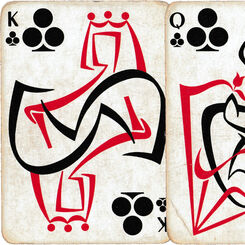
Jeu Boléro
Sweeping, semi-abstract designs by J.L. Jolin in red and black only.
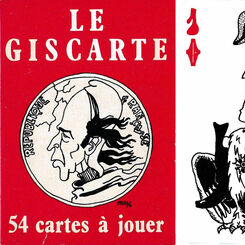
Le Giscarte
Le Giscarte political playing cards designed by Eddy Munerol, France, 1976.
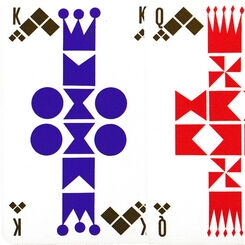
Knoll International
Geometric designs by the French artist Jean Garçon for Knoll International, the furniture company.
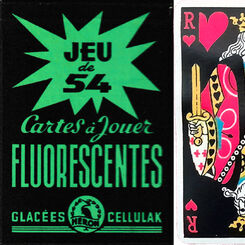
Cartes à Jouer Fluorescentes
Standard French cards but printed with fluorescent inks on a black background.
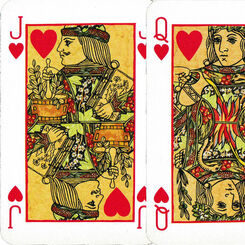
SEMP playing cards
Modified Anglo-American courts advertising a French medical publishing company.
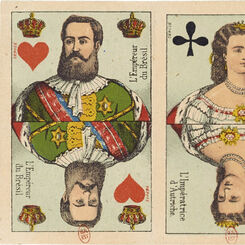
Jeu Quatre Empereurs
Brazilian scenic aces with emperors of Brazil, Austria and France and other dignitaries on the court...
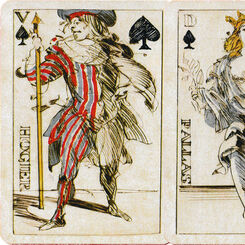
Claude Weisbuch
Free reinterpretation of the traditional Paris pattern courts by the artist Claude Weisbuch.
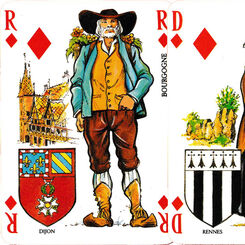
Hôtels-Grils Campanile
Publicity pack for the Campanile hotel and restaurant chain featuring French provincial costumes, wi...
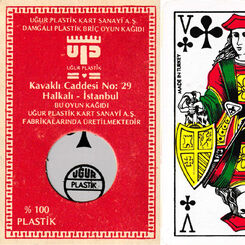
Belgian/Genoese pattern from Turkey
All-plastic cards of the Belgian/Genoese type, made in Turkey.
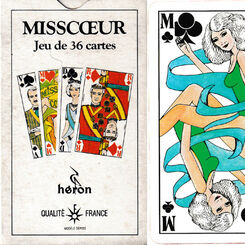
MISSCŒUR
Elongated cards from France with a fourth court card, a Miss.
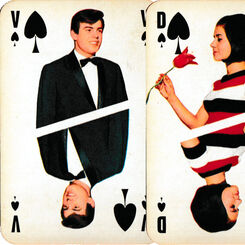
Jeu des Copains
French popular singing stars of the 1960s.
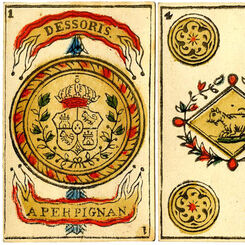
Dessoris
Spanish-suited cards by Dessoris, Perpignan, which anticipate the French Catalan pattern.
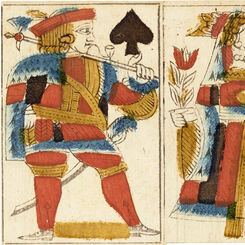
Lyon pattern by Michel Ressy
Lyon pattern by Michel Ressy, c.1760.
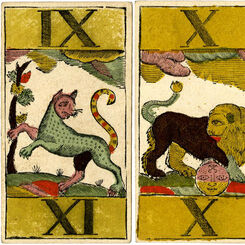
Animal Tarot by J. B Dubois
French-suited Bavarian Animal Tarot by J B Dubois, Liège, Belgium, late 18th C.
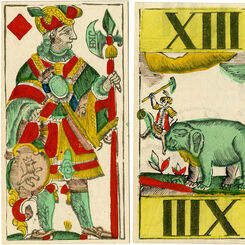
Animal Tarot by J. T Dubois
Early 19th century Animal Tarot pack produced by J T Dubois, Liège, Belgium.
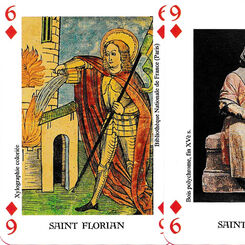
Les métiers et leurs protecteurs
“Les métiers et leurs protecteurs” playing cards published by Editions Dusserre, c. 1995.
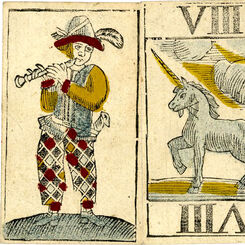
Animal Tarot by G. Larmoyer
Flemish Animal Tarot deck by G. Larmoyer, Liège, 1753.
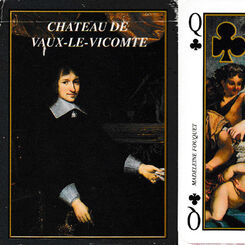
Château de Vaux-le-Vicomte
Famous people associated with Nicolas Fouquet’s splendid château of Vaux-le-Vicomte.
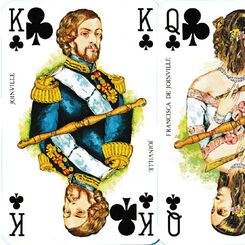
Compagnie Maritime des Chargeurs Réunis
French navigators and explorers on a promotional pack for the C.M.C.R shipping company.


